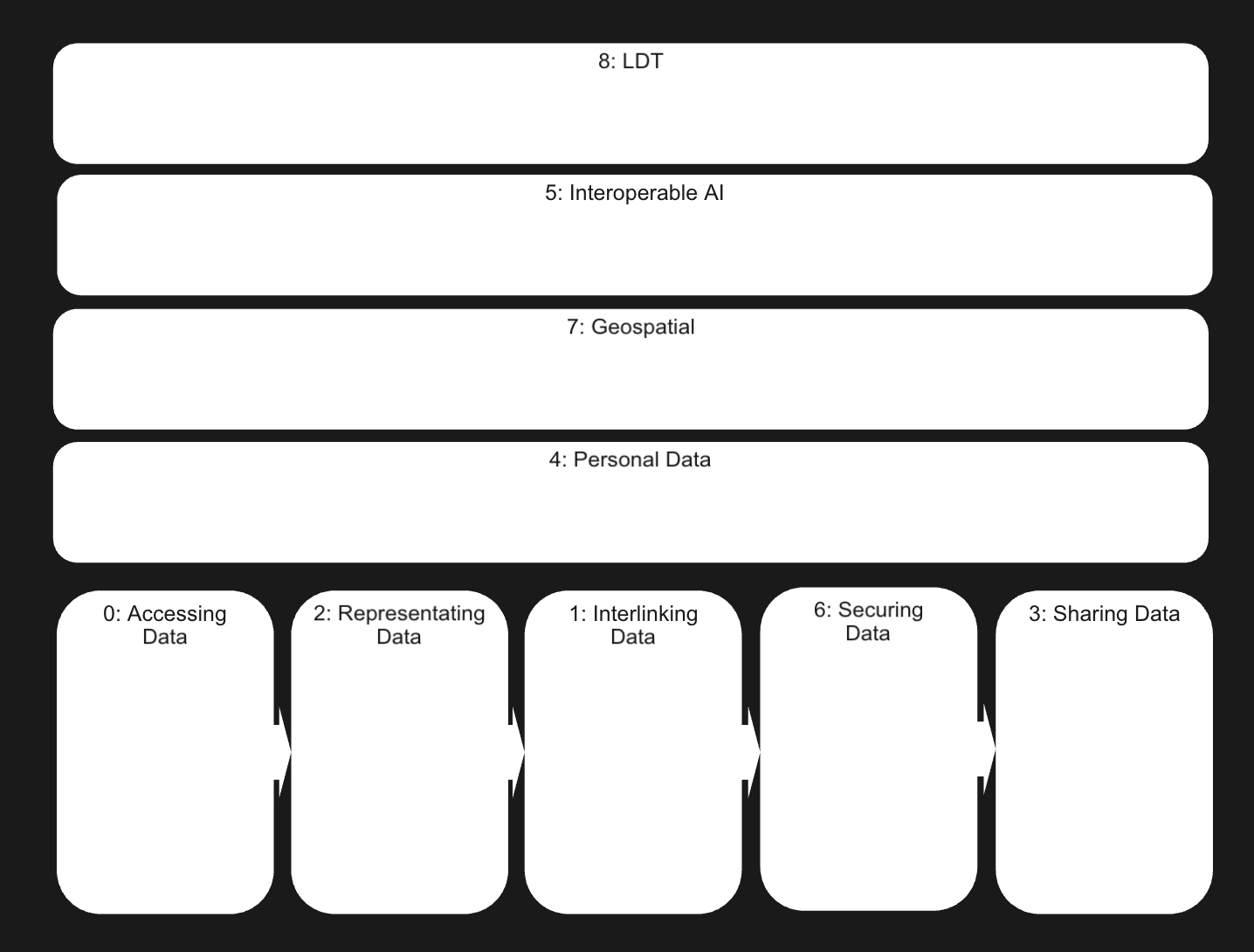Introduction
The minimal interoperability mechanisms (MIMs) enable a minimal but sufficient level of interoperability for data, systems, and services specifically in the context of smart city solutions.
The intended audience for this document are:
Solution providers that wish to make sure their solutions are interoperable with other and allow fluid exchange of data within a Smart Cities and Communities context.
Procurers that wish to procure solutions that are future-proof and allow cost-effective integration within an existing Smart Cities and Communities Information and Communication Technology (ICT) architecture.
MIM Framework
MIMs are organised in a simple framework that consist of two distinct categories:
Foundational MIMs
Application-Specific MIMs.
Foundational MIMs
These MIMs provide the core functionalities needed to have data interoperability within a city's data ecosystem. These MIMs focus on complementary capabilities with a clear separation of concerns. They can also be considered incrementally for a city’s digital transformation journey when building an interoperability local data ecosystem. For instance, context information management relates both to data access and interlinking it. Even though different technologies may be used to realise one or the other, NGSLI-LD, for instance, tackles them both.
Foundational MIMs tackle interoperability issues that are related to the typical data journey:
Before any data can be made available in a city's data ecosystem, access to relevant data sources to encompass that ecosystem has to be ensured. All data should be made available via APIs, ideally based on interoperable standards. (MIM0)
Once data is accessible, it should be represented in an interoperable way using standards-based data format so it can be effectively used across an organisation or the wider data ecosystem. (MIM2)
The next step in establishing an interoperable data ecosystem is to ensure that data is discoverable and adequately described (meta-data) to facilitate its reuse by others and that usage terms are clearly defined in an interoperable way. A data ecosystem also requires suitable value flow and trust mechanisms to ensure that providers and consumers in a data ecosystem can exchange data in an interoperable and trusted way. (MIM3)
In order to better extract insights and knowledge from data, data users need a way to interlink data sources in a data ecosystem to express contextual relationships that aid further interpretation. Management of such contextual relationships should be achieved in interoperable ways across different data sources. (MIM1)
Application-specific MIMs
These MIMs address other issues to be solved in order for the ecosystem to realise its full potential. These MIMs will enhance the functionalities of the data ecosystem. They draw strongly on the foundational MIMs. They address particular application areas of data sharing in which further interoperability issues might exist.

Individual MIM structure
Based on the ITU Y.4505 standard, previously known as Y.MIM, the documentation for any particular MIM is required to cover the following content:
Objectives
Capabilities
Requirements
Mechanisms
Interoperability guidance
Conformance and compliance testing
In addition, MIM documentation may include informative content regarding:
Relevance to public policy
Procurement guidelines
Implementation guidelines
The structure is illustrated in the figure below:
License
This work is licensed under the Creative Commons Attribution-ShareAlike 4.0 International License (CC BY-SA 4.0).
The reader is free to:
Share – copy and redistribute the material in any medium or format.
Adapt – remix, transform, and build upon the material for any purpose, even commercially.
Under the following terms:
Attribution – The reader must give appropriate credit, provide a link to the license, and indicate if changes were made. He/She may do so in any reasonable manner, but not in any way that suggests the licensor endorses you or your use.
ShareAlike – If the reader remix, transform, or build upon the material, he/she must distribute the contributions under the same license as the original.
For more details, see the full license: https://creativecommons.org/licenses/by-sa/4.0/
Last updated